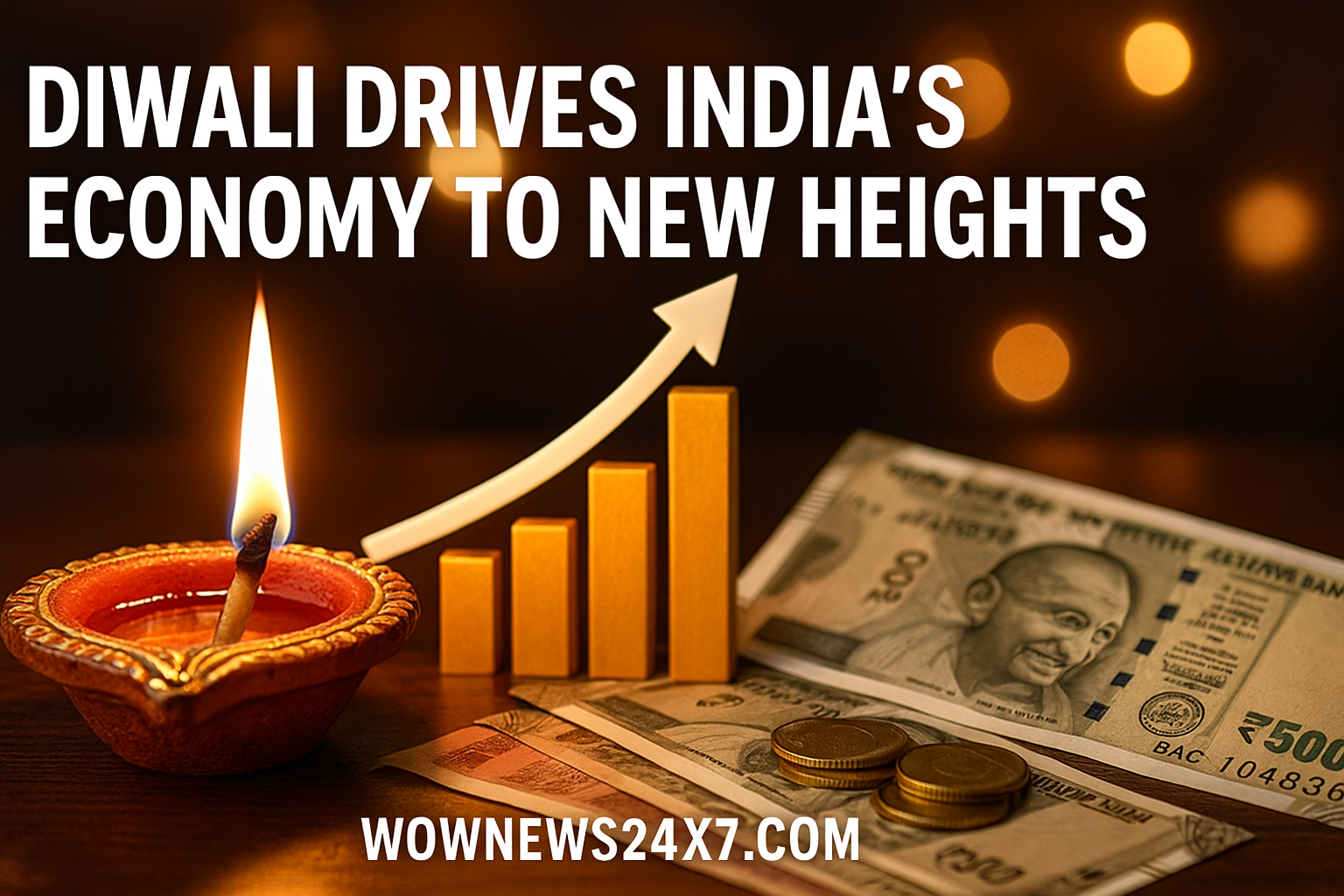Diwali 2025 boosts India’s economy with estimated consumer spending of ₹3.75 lakh crore, driving growth across retail, manufacturing, financial markets, tourism, and government revenues, enhancing GDP impact and broadening economic benefits to urban and rural regions alike.
As India lights up for Diwali 2025, the festival’s impact is evident with robust economic activity spanning varied sectors. This year’s celebrations have sparked heightened consumer spending, production surges, and increased activity in financial and service industries, marking Diwali as a pivotal driver of economic momentum.
The festive season is estimated to generate around ₹3.75 lakh crore in consumer spending, boosting demand in consumer goods, e-commerce, manufacturing, financial markets, tourism, and government revenues. The broad-based economic ripple effects of Diwali extend beyond urban centers into smaller towns, further amplifying its role as a key economic stimulant.
Consumer Spending Surge
-
The overall expenditure for Diwali related goods, including clothing, gold, electronics, and sweets, has shown a strong increase, with retail sales witnessing a 20% year-on-year rise.
-
E-commerce platforms have played a critical role, with gross merchandise value (GMV) surging by 20%, and over half of this growth coming from tier II and III cities, highlighting the festival’s broadening consumer base.
Manufacturing and Artisan Boost
-
Demand spikes in textiles, lighting, handicrafts, and sweets have driven manufacturing units and MSMEs to increase output, creating seasonal employment opportunities in rural and semi-urban areas.
-
Traditional artisans, especially those producing diyas and rangoli supplies, are reaping benefits from the festival’s emphasis on cultural customs.
Financial Market Optimism
-
The traditional "muhurat" trading session during Diwali has once again symbolized optimism, with increased trading volumes seen in consumer finance and credit card transactions.
-
Banks and NBFCs report heightened transactional activity linked to festive bonuses and loans, reflecting consumer confidence.
Tourism and Hospitality Uptick
-
Increased family travel and festivities have boosted demand for airlines, railways, hotels, and event management services.
-
Ancillary sectors like catering and real estate staging also witness intensified activity during this festive period.
Government Revenue and Fiscal Impact
-
Elevated spending has resulted in higher GST and sales tax collections, positively impacting public finances.
-
Policy incentives and subsidies in certain sectors, such as LED lighting, concurrently support sustainability alongside economic growth.
The Diwali 2025 festival’s widespread economic effects underscore its vital contribution to India’s GDP, proving that the festival is not only a cultural celebration but also a significant economic phenomenon.
Sources: Reuters, Economic Times, Business Standard, Confederation of All India Traders, Unicommerce, Asian Development Bank, Bloomberg Quint, The Squirrels, Marketbrew.in

